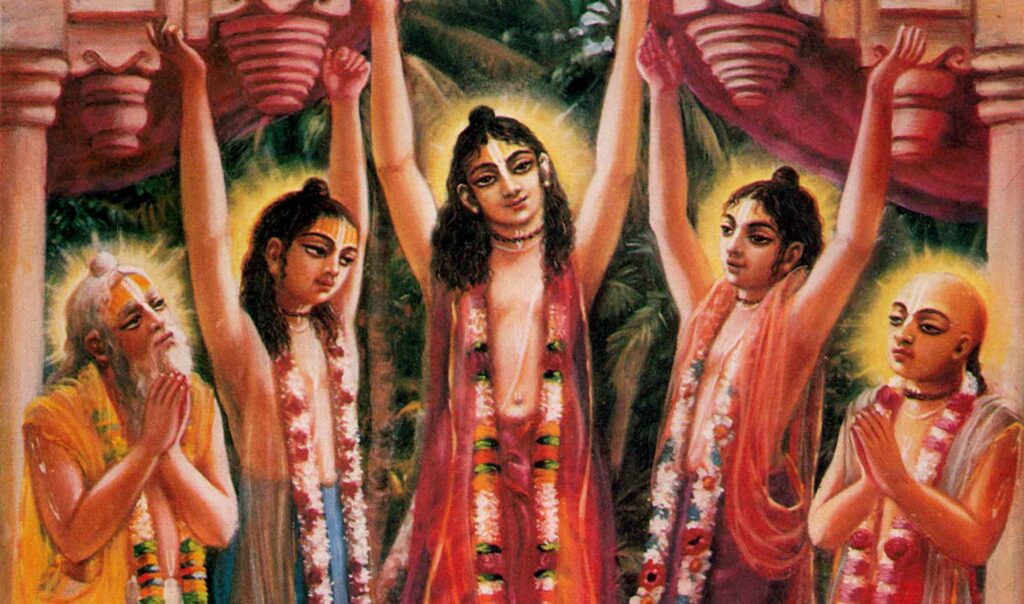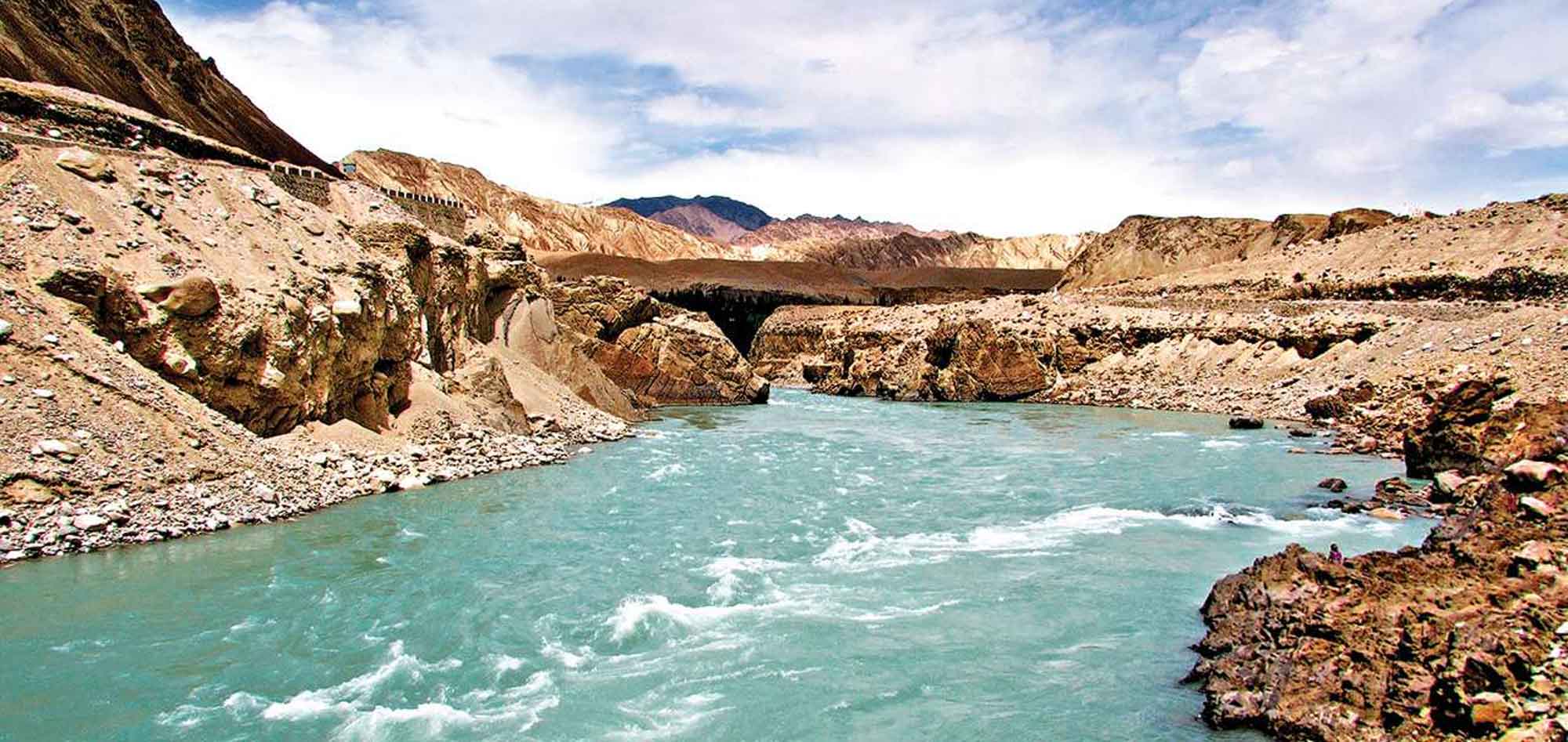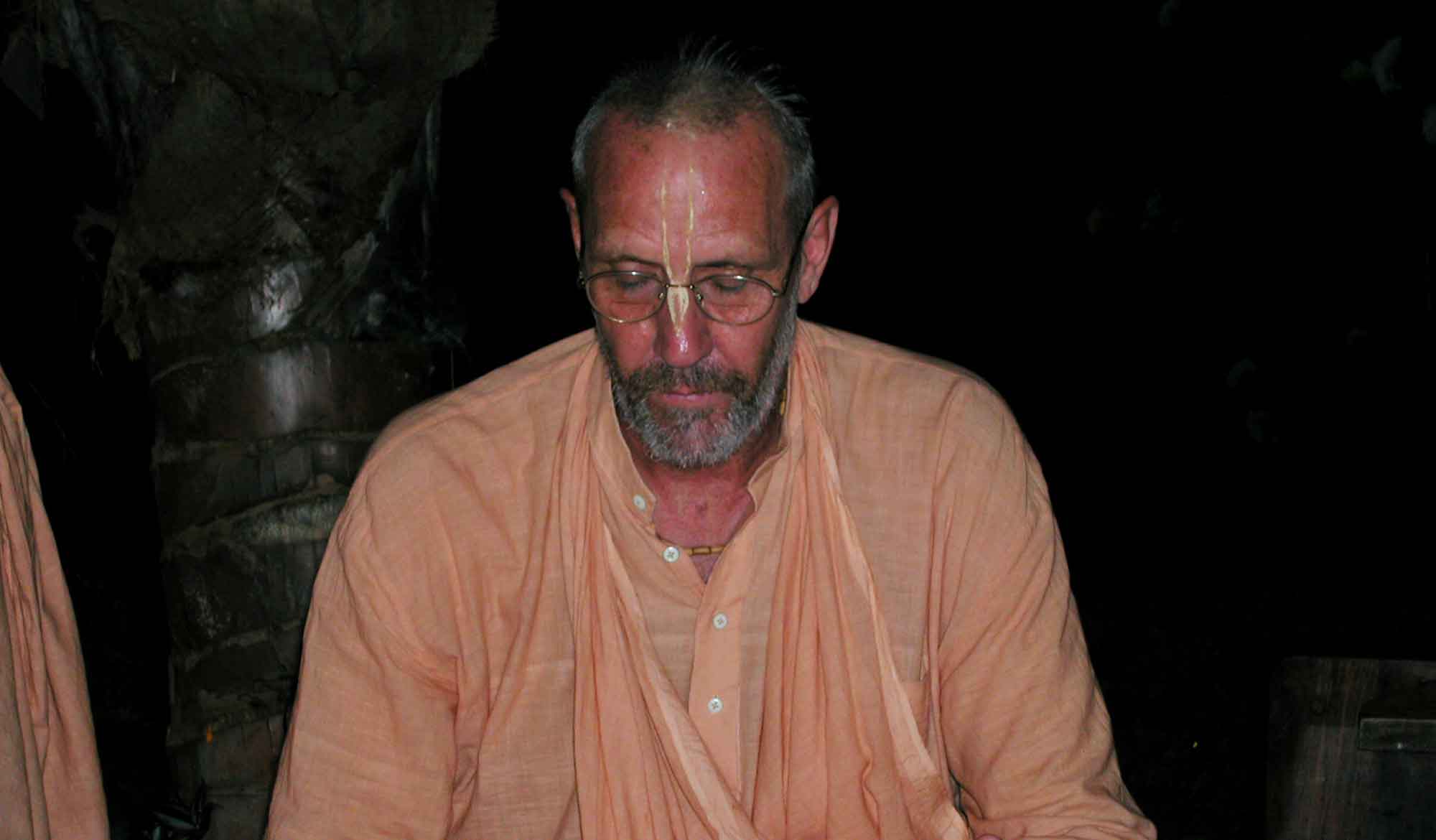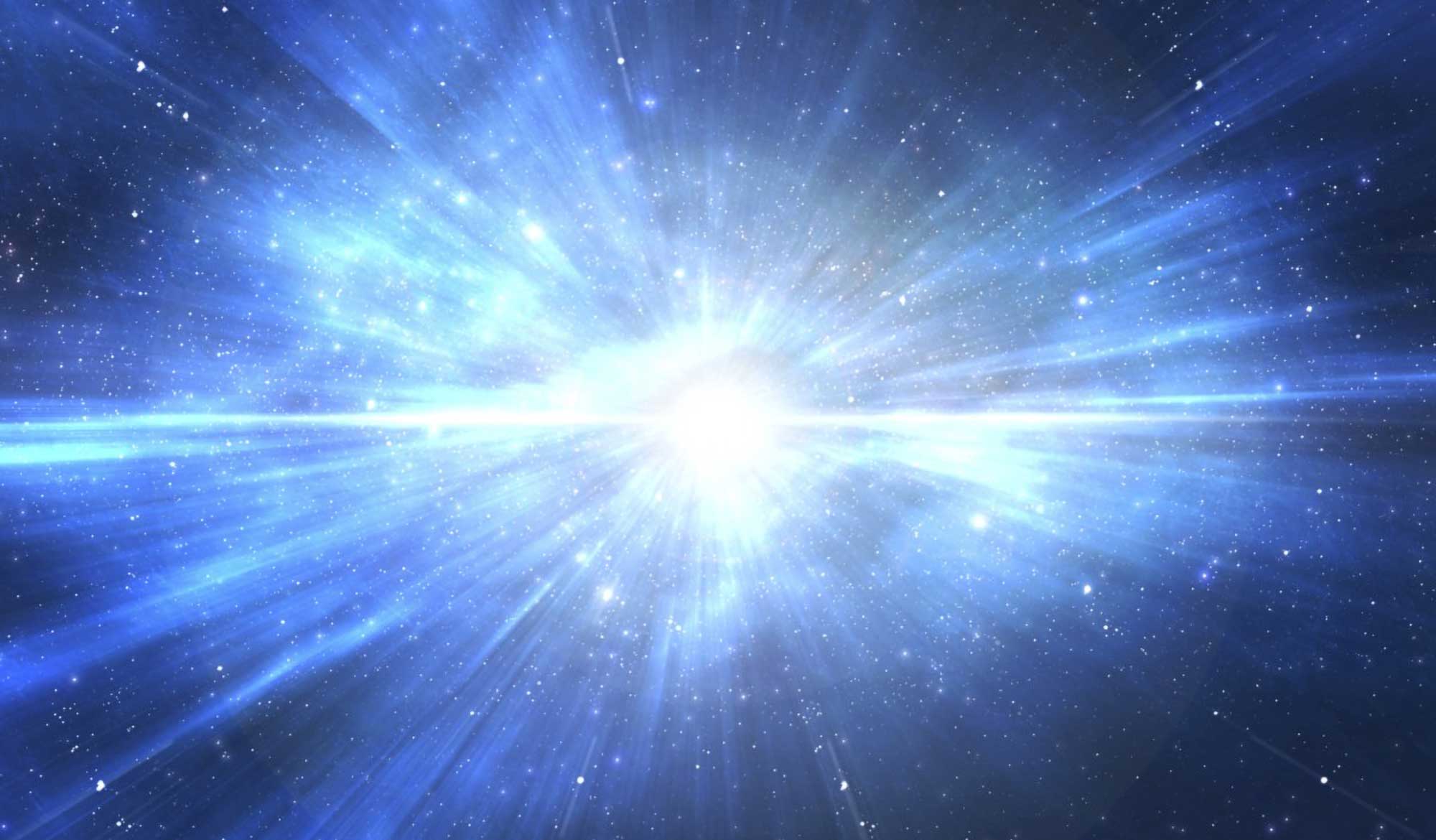by Swami B.G. Narasingha
‘Timiṅgila – Myth of Fact?’ was written by Swami B.G. Narasingha on September 11th 2009. This article explores the ancient story of the Timiṅgila from the Vedic literature and connects it with the prehistoric Megalodon which apparently became extinct 1,250,000 years before human beings.
deha-smṛti nāhi yāra, saṁsāra-kūpa kāhāṅ tāra,
tāhā haite nā cāhe uddhāra
viraha-samudra-jale, kāma-timiṅgile gile,
gopī-gaṇe neha’ tāra pāra
“The gopīs have fallen into a great ocean of separation and are being devoured by the Timiṅgila fish of their ambition to serve You. The gopīs must be delivered from the mouths of these Timiṅgila, for they are pure devotees. Since they have no material conception of life, why should they aspire for liberation? The gopīs do not want that liberation desired by yogīs and jñānīs, for they are already liberated from the ocean of material existence.” (Cc. Madhya 13.142)
The above verse is quoted from Caitanya-caritāmṛta, Madhya-līlā 13.142, wherein Śrī Caitanya Mahāprabhu equates the gopīs as having fallen into a great ocean and that they are being devoured by their ambition to serve Kṛṣṇa. Mahaprabhu compares their ambition to the legendary Timiṅgila fish. The Timiṅgila fish is said to have lived in the oceans of this planet as the greatest predator ever known.
This article is not about Kṛṣṇa, the gopīs, or their intense desire to serve Him. This article is about the Timiṅgila fish — myth or fact? (So if you were expecting to read something rasika you can stop reading here.)
The Śrīmad Bhāgavatam, Rāmāyaṇa and other Vedic literatures often speak of fantastic places and of creatures that may have once lived on this planet. One such creature was the Timiṅgila fish. The Timiṅgila is said to have been the most formidable predator in the oceans. It was enormous in size and its favourite food was said to have been whales. Whales are also very big creatures of the ocean, but unlike the Timiṅgila, the whale has yet to become extinct. Some whales of our time reach up to 60 feet in length, like the Whale Shark of the Indian Ocean. The Whale Shark is actually a whale that physically resembles a shark but is not a predator. The Timiṅgila, on the other hand, was a fierce predator and used to eat whales in one giant gulp! But did the Timiṅgila actually exist on this planet or did it exist only in the poetic imagination of the writers of the Vedic literatures? Certainly many mundane scholars would have us think so.
The etymology of the word ‘Timiṅgila’ is as follows: in Sanskrit timi is the word for ‘whale’ and gila means ‘to swallow’. Thus Timiṅgila literally means ‘to swallow a whale’ – not just to swallow, but to swallow in one huge bite!
References to the Timiṅgila fish of antiquity are to be found in numerous places. In Śrīmad Bhāgavatam, Mārkaṇḍeya Ṛṣi encounters the Timiṅgila in his fantastic experience in the waters of devastation and survives the ordeal by the grace of the Supreme Lord.
kṣut-tṛṭ-parīto makarais timiṅgilair upadruto vīci-nabhasvatāhataḥ
tamasy apāre patito bhraman diśo na veda khaṁ gāṁ ca pariśrameṣitaḥ
“Suffering from hunger and thirst, attacked by Makaras and Timiṅgila and battered by the waves and the wind, Mārkaṇḍeya wandered through the infinite gloom that enveloped him. Overcome by exhaustion, he lost all sense of direction and could not ascertain what was the sky and what was the earth.” (Bhāg. 12.9.16)
In Rāmāyaṇa the Timiṅgila is mentioned as inhabiting the waters between Lord Rāma and Laṅkā, the capitol of the demon king, Rāvaṇa.
candrodaye samādhūtaṁ praticandra samākulam
caṇḍānila mahā-grāhaiḥ kīrṇaṁ timi-timiṅgilaiḥ
“When the moon rose, the ocean surged and the image of the moon reflected unlimitedly in it. That ocean abounded with huge crocodiles that were as swift as fierce winds, as well as whales and Timiṅgila.” (Rāmāyaṇa, Yuddha-kaṇḍa 4.114)
Similarly, Mahābhārata mentions the Timiṅgila as being deep within the ocean, along with other huge sea creatures.
timiṅgilāḥ kacchapāś ca tathā timi-timiṅgilāḥ
makarāś cātra dṛśyante jale magnā ivādrayaḥ
“There were seen Timiṅgilas, tortoises, Timi-Timiṅgilas and Makaras, that were like great rocks submerged in the water.” (Mahābhārata, Vana Parva. 168.3)
The Ayurvedic text of the 6th century BCE known as Suśruta Saṁhitā also lists the Timiṅgila as being amongst the formidable species of marine life.
timi-timiṅgila-kuliśa-pākamatsya-nirularu
nandi-vāralaka-makara-gargaraka-candraka
mahā-mīna-rājīva prabhṛtya samudrāḥ
“The Timi, Timiṅgila, Kuliśa, Pāka-matsya, Nirularu, Nandi-Vāralaka, Makara, Gargaraka, Candraka, Mahā-mīna, and Rājīva etc., constitute the family of marine fish.”(Suśruta Saṁhitā, Ch.45)
Are these various accounts of the Timiṅgila to be taken as factual or are they simply a part of fiction?
The Makara is also mentioned in several of these verses and according to scholarly opinion the Makara, like the Timiṅgila, is more or less a fantastical, mythical, fiction. However, in Bhagavad-gītā Kṛṣṇa says that of aquatics He is the Makara.
pavanaḥ pavatām asmi rāmaḥ śastra-bhṛtām aham
jhaṣāṇāṁ makaraś cāsmi srotasām asmi jāhnavī
“Of purifiers I am the wind, of the wielders of weapons I am Rāma, of fishes I am the Makara (shark), and of flowing rivers I am the Gaṅgā.” (Gītā 10:31)
From the story of Mārkaṇḍeya we can deduce that the Makara was a predator or at least aggressive, since Mārkaṇḍeya was attacked by Makaras in the ocean. Temple art in India generally depicts the Makara as being a combination of several wonderful animals. Such renderings show the Makara as having the jaws of a crocodile, the trunk of an elephant, the tusks of a boar, the scales of a fish, the tail of a peacock and the eyes of a monkey.
Although translators of the Bhagavad-gītā usually render the word ‘Makara’ as shark, this is for simplicities sake and for the ease of the reader. If Kṛṣṇa was simply comparing Himself to a common shark then He would have used the Sanskrit word for shark, namely grāha, but He didn’t. Kṛṣṇa Himself is certainly not ordinary and can only be compared to the most extensive and wonderful things within our experience, and yet He is even beyond that. The Makara, like the Timiṅgila, is certainly something more wonderful than just a shark – something difficult for us to imagine in this day and age.
If someone were to ask why Kṛṣṇa compares Himself to a Makara rather than a Timiṅgila, we would probably reply that the Makara is more wonderful than the Timiṅgila in that it is a combination of many wonderful and beautiful creatures.
So, are we to gather that in Bhagavad-gītā, Kṛṣṇa has compared Himself to a creature that does not exist, and if so, are we then to conclude that Kṛṣṇa Himself does not exist? Should we also conclude that the wind, Rāma and the Gaṅgā are all fictional?
After all, has anyone actually seen any physical evidence of one of these monsters of the deep blue? Well, in fact they have – meet the Megalodon!
Early accounts of large triangular teeth found imbedded in rock cliffs first appeared in Europe during the Renaissance period, but were believed to be the petrified tongues of dragons and snakes. In 1667 a Danish naturalist, Nicolaus Steno, recognized these findings as ancient shark teeth. In 1835 a Swiss naturalist, Louis Agassiz, gave this mysterious creature the name by which it is known today, Megalodon — which in Greek means ‘big tooth’.
Thought to easily reach 82 plus feet in length, weighing in at 70 plus metric tons, with teeth measuring 18 plus centimeters in length and capable of exerting a bite force of 40,131 pounds plus per square inch — the Megalodon is easily recognized as the greatest predator of all time.
Fossil remains of the Megalodon, have been excavated from many parts of the world, including Europe, North America, South America, Puerto Rico, Australia, New Zealand, Japan, Africa, Malta and India. Forensic studies of Megalodon fossils reveal that the predator was capable of eating anything in its path, but favoured whale meat.
According to scientific evidence it is estimated that the last of the Megalodons lived on this planet around 1.5 million years ago, give or take a few thousand. That is a long time ago, especially considering that the estimated age of the first human being was only 250,000 years ago. That would mean that the Megalodon became extinct 1,250,000 years before the first human being walked upright, spoke a coherent language, kept records or attempted to write anything.
By comparison of the size, haunt, predator behaviour and dietary habits, the Megalodon and the Timiṅgila appear to be the same creature. But what is so amazing or interesting about that and what is our point?
Our point is that western scholars assert that the Bhāgavatam was only written in the 9th century CE, the Rāmāyaṇa in the 4th century BCE, and the Mahābhārata between the 8th and 4th centuries BCE. But if this were a fact, then how did the writers of these books know about an ocean-dwelling creature, its size, its vicious aggression and its diet that had been extinct for 1.5 million years? Bhāgavatam, Rāmāyaṇa and Mahābhārata all mention the existence of the Timiṅgila/Megalodon. Where did they get this information?
When (by scientific estimation) human beings have only been on this planet since 1,250,000 years after the Megalodon/Timiṅgila became extinct — who told them about these creatures? If there were no humans present on this planet between the period when the Megalodon/Timiṅgila became extinct and 250,000 years ago, how could the writers of the Vedic texts have known such things?
The scientist and scholar will have to answer this question, but for us it is simple — there have always been human beings on this planet from its very creation and the knowledge of all such things has been passed down thru the ages via the disciplic succession of gurus and disciples.
More Articles by Swami B.G. Narasingha
The Sacred River Sindhu/Indus
‘The Sacred River Sindhu/Indus’ was posted by Swami B.G. Narasingha on his blog, narasingha.net, on October 2nd, 2011. In this short article, Narasingha Maharaja explains the significance of the River Sindhu and his pilgrimage to it. This article was later expanded into a bigger article called ‘Sindhu River – How India Got Her Name.’
Instructing the Guru
This article “Instructing the Guru” was written in April 2018 by Śrīla Narasingha Mahārāja who answers a question concerning a previous article wherein a Vaiṣṇavī writes a letter to her dīkṣā-guru and explains to him about the importance of śikṣā. In response, a question was raised by a devotee about the etiquette of a disciple instructing her guru.
The Atomic Ray – From Uniform Consciousness to Individual Conscious Units
In “The Atomic Ray - From Uniform Consciousness to Individual Conscious Units” written in 1996 Śrīla Narasiṅgha Mahārāja discusses the constitutional position of the jīva, according to Bhaktivinoda Ṭhākura and Śrī Caitanya-caritāmṛta.













